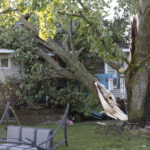This article is part of a sponsored series by Cotality.
In the blink of an eye, COVID-19 reshaped our world. As the critical functions of the real estate, lending, and insurance economies began to adapt to the new circumstances of the pandemic, CoreLogic has played a key role in enabling the shift towards digital interaction with tools such as virtual open houses and tours, digital collateral valuation (including do-it-yourself, or DIY, interior inspections) and geospatial analytics and artificial intelligence (AI) to ensure people are able to find, buy and protect their homes.
In our new white paper Modernizing the Housing Economy: Using Technology to Navigate the Next Decade, CoreLogic explores the effects of the COVID-19 pandemic on the real estate, lending, and insurance industries and how technological advancements can make the industry more efficient and resilient in an unpredictable world.
CoreLogic has seen many of the most significant changes to these three industries occur in real-time. From July to October, use of our proprietary real estate marketing solution had an increase in video volume by 141% compared to the same period last year. 3D model usage was up by 76%. CoreLogic’s neighborhood-specific trend and forecast analysis, which allows individuals or businesses to quickly find their ideal neighborhood, has also seen an increase in users looking at and purchasing reports of neighborhood crime risk data.
PropertyAssistTM, a virtual portal available to homeowners to remotely provide information to appraisers, has had 10,000 appraisal assignments completed through the platform since its release in April, with most of the assignments completed during shelter-in-place orders.
On CoreLogic’s collaborative web application built to bridge the communication gap between policyholders and insurance companies, there has been a significant increase in the use of photo uploads as insurers have been unable to visit properties in-person. And on the CoreLogic UnderwritingCenterTM, there has been a 66% increase in the average number of DIY and virtual surveys ordered.
While it is clear that virtual and automated solutions are being adopted throughout these key industries, it is also important for us to understand why these technologies are capturing the attention of our clients in the first place.
Historically, spring has always marked the beginning of the homebuying season. However, the onset of the pandemic this year changed everything. After President Trump declared COVID-19 a national emergency on March 13, 2020, the housing market began to experience a dramatic decline in open houses, new listings, pending sales contracts and closings.
According to CoreLogic Real Estate Analytics data, by mid-April new listings and new contract signings were down by almost 50% compared to the same week last year. A decline in sales contracts was accompanied by a significant drop in home purchase loan applications. By early April, home purchase loan applications were down almost 30% compared to the same time last year.
With many families losing income, and several states with a high percentage of homeowners without equity, it is likely that delinquencies and foreclosures will rise despite the protections in the Coronavirus Aid, Relief and Economic Security Act (CARES Act), though the legislation will help slow down this rise.
In 2009, after the financial crisis, negative equity across the nation peaked with 26% of all mortgaged properties in negative equity. Since then, the negative equity share has gradually decreased and reached 3.2% by the end of June 2020. But in some states, the negative equity share continues to be elevated, notably in Louisiana (9.3%), Connecticut (6.4%) and Illinois (6.5%).
While there has not been a historical precedent for how a pandemic could impact mortgage forbearance, high unemployment had a profound impact on mortgage delinquencies during the 2008 financial crisis. Similarly, the unparalleled rise in unemployment resulting from the current pandemic will certainly have an impact on mortgage delinquencies.
At its peak, which is projected to occur in the second half of 2021 with an unemployment rate of 7%, the forbearance-delinquency rate is forecasted to reach 4.6%. As expected, there have been a growing number of forbearance requests since March. There were more than 4 million mortgages in forbearance by the end of the summer, and mortgage servicers are already bracing for waves of payment deferrals and loan modification requests in the months ahead.
Moreover, with fewer new property listings and a higher number of homes being withdrawn from the market, inventory is much lower than it was during the same time last year. As a result, insurance carriers are seeing a decline in new home insurance purchases.
COVID-19 has made it even more apparent that the real estate, lending and insurance industries rely on processes with serious vulnerabilities. However, with the right technology, we can transform the property ecosystem and make it resilient enough to weather any storm.
See our new white paper Modernizing the Housing Economy: Using Technology to Navigate the Next Decade for more information on how CoreLogic solutions can make your organization resilient in the face of uncertainty.
Was this article valuable?
Here are more articles you may enjoy.



 North Carolina Sting Operation Alleges Roofer Damaged Shingles to File Claim
North Carolina Sting Operation Alleges Roofer Damaged Shingles to File Claim  Death at Universal’s Orlando Resort Roller Coaster Ruled Accidental
Death at Universal’s Orlando Resort Roller Coaster Ruled Accidental  Aon Adds to List of Brokers Suing Howden US for Alleged Poaching, Theft
Aon Adds to List of Brokers Suing Howden US for Alleged Poaching, Theft  One of Highest Property Claims Severity Recorded in Q3 on Low Volume, Says Verisk
One of Highest Property Claims Severity Recorded in Q3 on Low Volume, Says Verisk 


